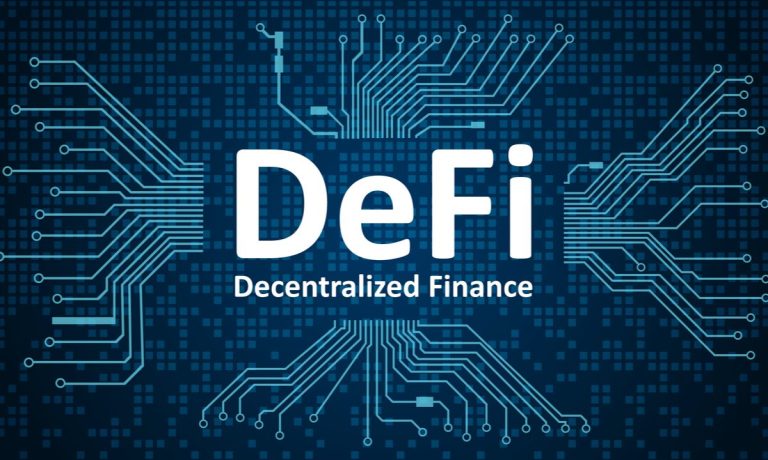Welcome to the 10th installment of PYMNTS’ series on decentralized finance (DeFi).
We’ve been looking at every part of DeFi — the biggest, hottest, most rewarding and risky part of the blockchain revolution.
By now you should have a solid grasp of the basics of DeFi — what it is, how it works, and what all those terms that get thrown around mean. Here are three basic things to keep in mind when you’re judging any project — or any claim for what’s real and what’s hype.
Will DeFi Win?
First, understand that like every part of crypto, there’s an enormous amount of hype, and people screaming, that this is going to change everything, overthrow traditional finance and make everyone who got in on the ground floor rich.
For all of the talk and the breathless reports about how frightened big finance is about DeFi, any real change is a long way off. To begin with, the amount of funds locked in DeFi — $100 billion — is huge. For crypto. The market capitalization of the NYSE is more than $28 trillion.
Advertisement: Scroll to Continue
See more: Rise in Bitcoin Pushes DeFi Past $100B Mark
That said, the basic value proposition of DeFi is the same as blockchain as a whole: Cut out the middleman. Understand that the user experience of trading on a decentralized exchange — a DEX — is not fundamentally different than on a centralized exchange, although fees tend to be lower and anonymity greater.
Where they differ is in the bowels: DEXs are powered by automated market makers (AMM) that replace order matching systems common to centralized exchanges with liquidity pools from investors. So, technically, you are not trading with another person, but with the system. The same dynamic applies to lending and borrowing protocols, which use liquidity pools.
However, the reason there are so many of these platforms is that building the technology is fairly easy with blockchain — which big banks have been investing in more and more.
What Are DeFi Investors Buying?
People who want in on the sky-high interest rates offered by DeFi staking and lending are largely investing in DEXs or lending/borrowing platforms.
This can be done in two ways. First, by buying their native cryptocurrencies, which are governance tokens offering a say in how the platform is run, and often benefits like lower fees.
Second, they can invest by funding the services like trading, borrowing, and staking that DeFi platforms offer. That is more or less risky depending on where you’re investing: the best rates are paid by smaller platforms that can fail or be frauds.
The key here is to understand what those platforms do.
Look at lending and borrowing protocols. Investors lock funds into a pool that borrowers can tap in exchange for interest rates that can be 100 times what they’ll get at a savings bank. But what are the borrowers doing with it? Theoretically, they can sell the stablecoins they borrowed for dollars, pull the money out and go buy a car, repaying it later.
In reality, though, most are playing the crypto market in a form of arbitrage, executing rapid trades across multiple exchanges to take advantage of minute differences in exchange rates. This requires a lot of capital to lock in as collateral, and is risky, particularly when leverage comes into the picture.
Then there’s day trading, futures, options — all bet on whether a crypto will go up or down — and there is plenty of leverage to be had as well. That said, the collateral protection margin call protocols generally work very well for the lender. Borrowers are frequently crushed when the value of their volatile crypto collateral drops and is liquidated.
Where Can it Go Wrong?
The old saying goes, “I fought the law and the law won.” The law has made very clear that it doesn’t like trading of any kind without strong anti-money-laundering (AML) compliance mechanisms in place. DeFi is designed to be as anonymous as possible. The sheriff is coming at some point, and there’s always a pressure point — off-ramping crypto for cash.
It is important to understand what can go wrong and why.
There’s a lot of fraud in DeFi. Rug-pulls, where a project attracts investors and makes off with the cash, were the biggest growth industry in crypto crime this past year, and DeFi projects can almost be created with cut and paste. It’s hard to judge what’s legit — for example, can the smart contracts be drained or changed by the developer — without actual coding knowledge.
Read also: The Most Ambitious of the ‘Ethereum Killers,’ Polkadot’s Launch Could Begin the Reinvention of DeFi
Or will smart contracts work as advertised? They are software, after all, and software can be buggy, have glitches just as easily on the blockchain as they can in any other environment. And on top of that, they are contracts that cannot be changed or canceled. Get the wording wrong and it’ll do what you said, not what you meant.
Caveat emptor — let the buyer beware — applies more to DeFi than any other part of crypto.

